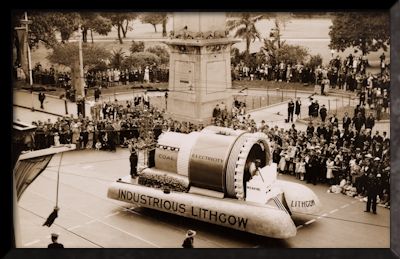 |
INTRODUCTION
Lithgow was an inevitable town, there were so many reasons for it to exist, and to exist where it is, that it just had to be.
So wrote the historian of the Small Arms Factory, Tony Griffiths. But as he himself asks, how did Lithgow, the country of the Wiradjuri and Gundungurra; Wywandy and Therabulat, become the crucible of Australian industry and ‘a transplanted pocket of Britain’s industrial black country’?
 The sites marked by Lithgow History Avenue, and detailed in this website, are the points where those transformations occurred, and where the groundwork was laid for what Lithgow would become in the 20th century, and beyond. Some of those sites, like the Blast Furnace and the collieries, link to an energetic industrialism that is now past. Others, such as the Workmen’s Club, the Greyhound Racing Track and Eskbank House, remain part of Lithgow’s social, cultural and sporting present. As you walk through Lithgow History Avenue, or browse this site, the stories of this place, and links to people and events both locally and further afield, unfold. The sites marked by Lithgow History Avenue, and detailed in this website, are the points where those transformations occurred, and where the groundwork was laid for what Lithgow would become in the 20th century, and beyond. Some of those sites, like the Blast Furnace and the collieries, link to an energetic industrialism that is now past. Others, such as the Workmen’s Club, the Greyhound Racing Track and Eskbank House, remain part of Lithgow’s social, cultural and sporting present. As you walk through Lithgow History Avenue, or browse this site, the stories of this place, and links to people and events both locally and further afield, unfold.
INTERACTIVE WALK
This website has been designed to be used with a mobile device such as a smart phone or tablet. As you move along the walk, click the next button for information on that item to be displayed. Alternatively a chronological list is also available.
Home | About | Chronological List |
Contact Email
|
 |